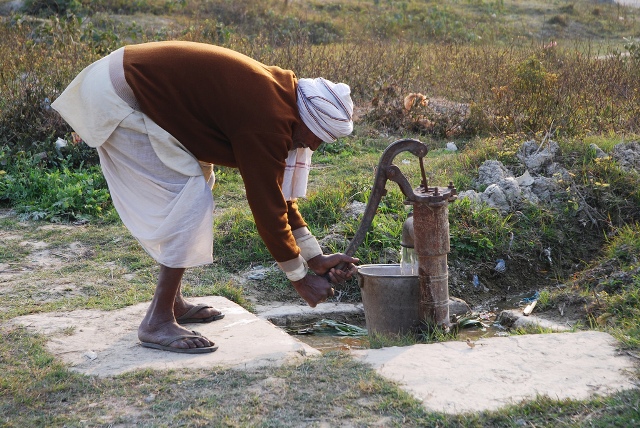Use Case 4: Groundwater and river water monitoring
Different locations within this Use Case:
There will be three different location each with different target systems:
- In Guwahati the targeted system will be ground water modelling;
- In Bangalore the targeted system will be water quality data collection and identification of best treatment technology;
- In Varanasi the targeted system will be river water monitoring.
Challenges:
- In Guwahati, the groundwater quality data is collected manually, and tested for a few parameters such as temperature, level and TDS. The groundwater in Guwahati City is polluted by iron, arsenic and fluoride.
- In Varanasi, traditional water quality measuring of the Varanasi river involves the manual collection of water at various locations, which is inefficient.
- Ground water quality in Bengaluru city is deteriorating with time, however no quantitative report is available to address the issue relevant to water quality deterioration.
Key aims for Ground / River Water Monitoring System:
- In Guwahati: the objectives are to assess the nature and extent of surface water pollution, understanding the environmental fate of different pollutants, evaluating the effectiveness of pollution control measures in place, evaluating water quality trend, and assessing the fitness of water for different uses. Therefore, the LOTUS team will develop a numerical transient state arsenic contaminant model for the Guwahati city, validate the numerical contaminant transport model based on the observed groundwater table and arsenic concentration and delineate arsenic safe aquifer or region for groundwater usage in Guwahati city.
- In Varanasi: the Ganga river water quality will be assessed, to know the extent of water pollution, and the presence of different pollutants to monitor the effectiveness of pollution control measures and assess the suitability of water for different uses.
- In Bengaluru: the objective is to monitor the groundwater quality in the city through the identification of appropriate water treatment technologies and through the development of mitigation advice/protocol regarding household treatment based on the groundwater quality which will be communicated to the general public.
How LOTUS will improve Ground / River Water Monitoring System:
- The LOTUS sensor will be integrated into the measurement stations and analysis software for the state of the water bodies will be tailored to the situations and implemented on the software platform
- For all cases, there will be the placement of LOTUS sensors; they will be integrated into a common probe with the wireless communication capability and IoT functionality,
- It will be evaluated in trials over several months.
Current developments:
- In Guwahati: the sensor will be used to measure the water quality parameters on daily basis wherein the LOTUS sensors will be manually handled by LOTUS project staff to collect the water quality data from these wells.
- In Bengaluru: a LOTUS project staff will collect the groundwater quality parameters by carrying the LOTUS sensor manually to the field. In this case, the water will be collected from the household borewells manually and it will be mapped with GPS location by using LOTUS box.
Outcomes of Use Case 4:
- The quality of life will be improved because poor water quality will no longer spread diseases nor hamper socio-economic progress.


